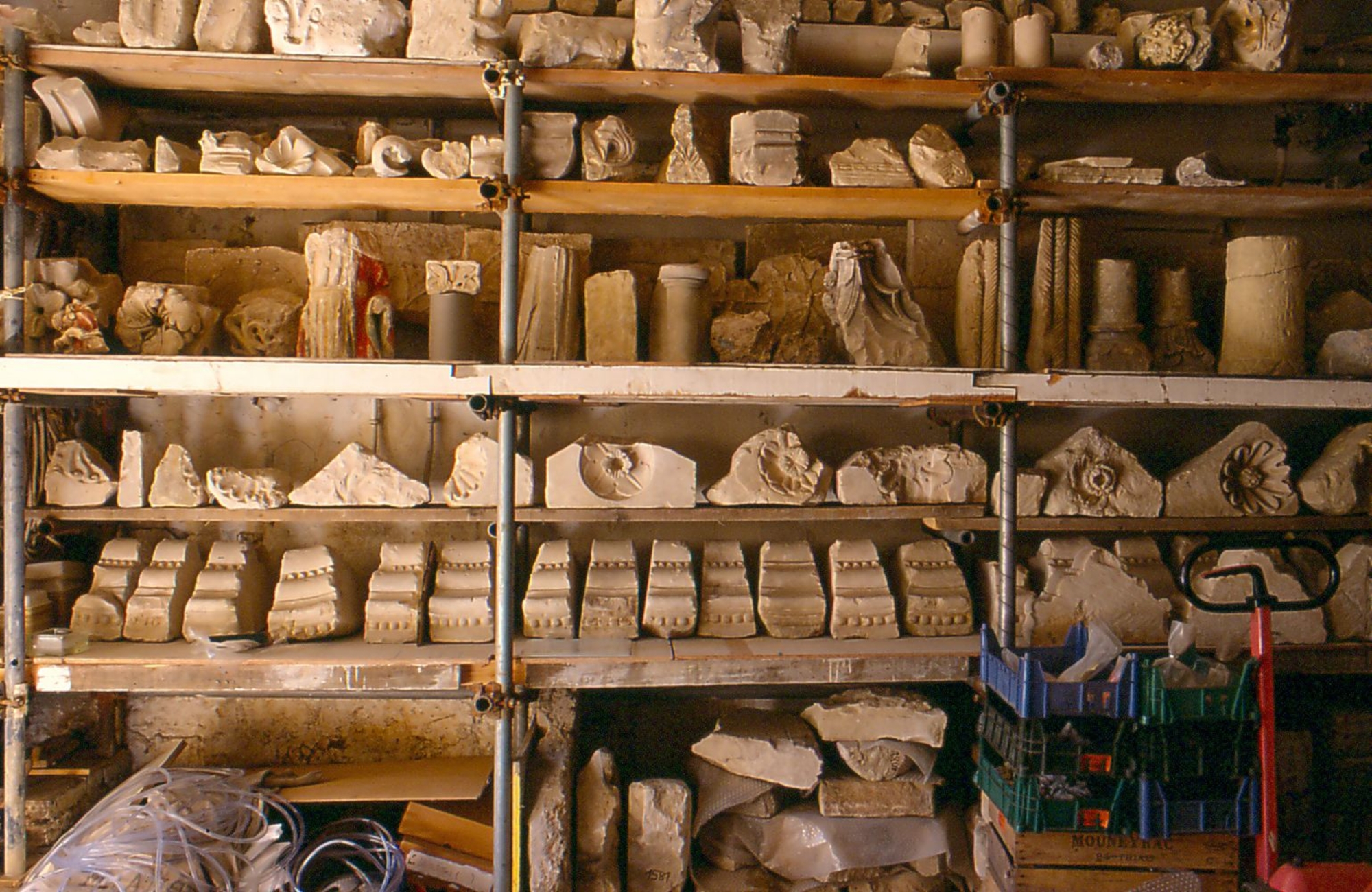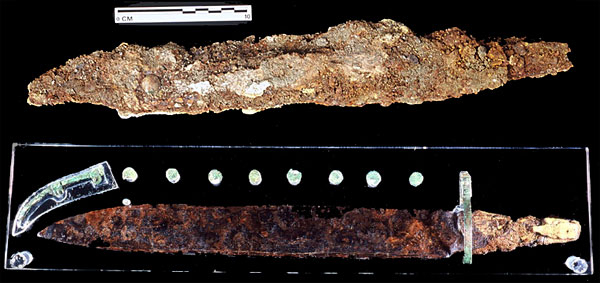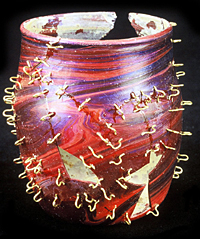- Home
- Archaeology, territory and citizenship
- Archaeology and heritage conservation and management
7th century scramsax with elements of its sheath after restoration.
© UASD / J. Mangin
Preserving the informational value of objects
Excavating in an urban area means working in a very complex environment, a reduced and densely occupied space that has been reworked over time by humans. As a result, urban excavations result in a large amount of documentation and a great deal of archaeological material. Archaeologists are not in search of objects but understanding, and it is above all the informational value of archaeological material that they are seeking (using it for dating purposes, for insight into technology, traces of human activity, etc.).
In addition, their questions are not solely aimed at the object itself but on the relationship between the object and the area in which it was found and other objects associated with it. The term "archaeological objects" encompasses both "artefacts" (man-made objects) and "ecofacts" (fauna, plants, etc.). It is essential that the precise location of the discovery of the object remains with it throughout its "after-dig" life. It is also essential to do everything possible to ensure that these objects retain their informational value and are accessible throughout the study. What follows are the underlying principles for the management and preservation of archaeological collections.
Fragments of stucco found near the Saint-Barthélemy church.
© UASD / O. Meyer.
Preventive conservation
At Saint-Denis, the issue of how to handle the mass of archaeological objects was present from the very start. It was decided that a position be created for an archaeologist to look after them. Nevertheless, given the variety of the materials recovered and the problems specific to their preservation (chemically altered glass that becomes "untouchable", very corroded metals, waterlogged organic material, for example), it became rapidly clear that other skills were required. Thus began, starting in 1980, the very fruitful collaboration between an archaeological team and a university master's program that since 2005 has been entitled Conservation-Restauration des Biens Culturels.
Archaeological glass altered by irisation.
© UASD / J. Mangin
An archaeological storage area
At the same time, an archaeological research center was set up in a former nursery school next to the Art and History Museum. It was fitted with offices, workshops, reserves and, since 1988, the UTICA laboratory, This "Maison de l'archéologie" is where the various links in the "operational chain" take place. It starts with the archaeological excavation, then passes through the treatment of data, the management and preservation of the collections, followed by study and scientific publication, and finishes with the discoveries being restored to the general public. Nearly all the objects from the excavations in Saint-Denis are kept here, in a storage area that is organized in function of the requirements of preventive conservation. The reserves are divided into several zones, each adapted to the conservation of materials of similar type, including two climate-controlled areas-one for metals, with a relative humidity of 40%, and another for organic materials with an RH of 60%.
Taking account of archaeological material starting with the excavation, monitoring it, and the cautious practice of preventive conservation have allowed the center to accumulate an archaeological trove of more than 40,000 remarkable objects-a reference collection on the material culture of the Middle Ages.
Restoration of a Carolingian goblet, with staples holding the potsherd in place prior to gluing.
© UASD / J. Mangin.




